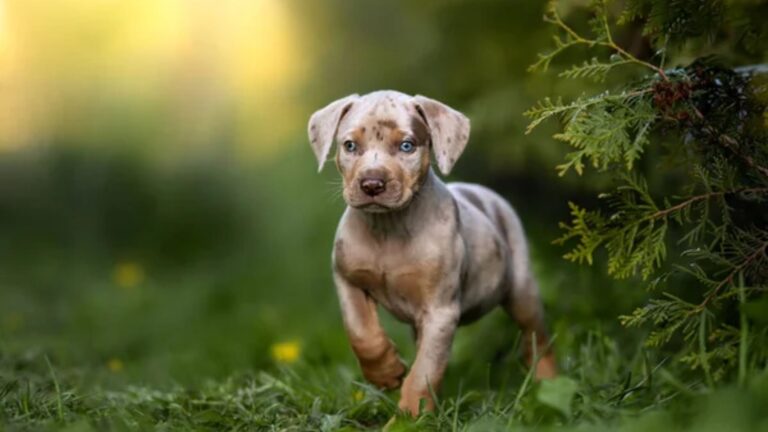Great Dane Blue: Is it true that these gentle giants are blue?
Anyone gazing at a Great Dane Blue may wonder if it is the dog for them owing to its overawing or intimidating effect.
On the other hand, the Great Dane Blue has acquired the epithet “Apollo of dogs” for its beautiful stance and smoothly-muscled physique, as its towering height is comparable to that of the Greek deity.
| Weight | Male: 100-120 lbs. Female: 100-120 lbs. |
| Height | Male: 32 in. Female: 30 in. |
| Features | Floppy ears |
| Exercise Requirements | 20-40 minutes/day |
| Energy Level: | Average |
| Bred For: | Hunting boars, guardian |
| Coat: | Length: Short Characteristics: Flat Colors: Black, fawn, blue, black, harlequin Overall Grooming Needs: Low |
History
Illustrations of Great Dane-like dogs were one of the significant things found in Egyptian antiquities reaching back to 3000 B.C. and in Babylonian temples erected about 2000 B.C. Historians believe similar dogs originated in Tibet, with documented descriptions of such dogs existing in Chinese literature as early as 1121 B.C.
The English Mastiff’s ancestors were most likely engaged in the breed’s history; others believe the Irish Wolfhound or Irish Greyhound also had a part.
Great Danes were initially nicknamed Boar Hounds because they were one of the breeds raised to chase boars. Cutting their ears protected them from boar tusks. The breed’s name was eventually altered to “English Dogges” in the 16th century.

Blue Great Dane puppy pricing
Great Dane Blue pups often retail for between $1,000 and $3,000, and you can usually get a blue Great Dane anywhere in this price range.
With any new adoption, it’s critical to choose a trustworthy breeder to guarantee your new pup has been appropriately bred and comes with the required immunizations and documentation, resulting in puppies being well-bred and missing the difficulties with a short lifespan and unwanted health concerns.
Personality: Great Danes are gentle giants. They are loving, lively, and good with youngsters. They will protect their home. Great Danes usually get along with other animals, primarily if they share living space with them, although some members of the breed can be hostile to canines they do not know.
Although Great Danes are generally easy to teach, some Great Dane enthusiasts believe that individuals can be reluctant learners.
What Exactly Is a Blue Great Dane? Is it true that they’re blue?
A Great blue Dane is not a distinct breed from other Great Danes but a differentiating factor from their other relatives is their blue coloring. Blue Great Danes are large working dogs that are enthusiastic and never afraid, and a recessive blue gene causes their hue.
Blue tones that might be observable in Great Danes include:
- Fawn Blue Steel Blue
- Blue Brindle
- Blue Harlequin
- Blue Merle
Great Dane in Steel Blue
The American Kennel Club recognizes one blue G.D.: the Steel Blue G.D.
Great Dane Blue Fawn
These canines fawn in hue with blue spots on their faces. It has the appearance of a blue mask. Their nose and eyes have a dark charcoal tone.
Great Dane Blue Brindle
The Blue Brindle features a fawn foundation with blue stripes instead of the standard black.
Great Dane in Blue Harlequin
The Blue Harlequin Great Dane is a well-known breed. They have a white base coat with black spots on them. As a result, they resemble Dalmatians. But their patches are blue or grey, not black!
Great Dane Blue Merle
Because of the Merle gene, these canines are incredibly unusual. Their coat is dark blue or brownish blue with black spotting slate. They have devoted companion dogs who will become lifelong friends.
Checkout Adorable Pics of Great Dane Blue
Do Kennel Clubs Accept Blue Great Danes?
Despite having a more distinct appearance than most of their Great Dane cousins, blue puppies get recognized by the majority of kennel groups. In reality, the AKC recognizes this hue as a standard color, assigning it the registration number 037.
10 Facts About the Blue Great Dane You Didn’t Know
Known to be Great Learners
This species is interesting because it is not content to merely stand by you. This dog will make it his mission to lean right into you. Regularly, he will knock you down, throw you off balance, and drive you insane. He’s affectionate and loving, and he can’t seem to stay away from his folks at all times.
It’s a Vicious Dog
It is not the type of dog who will sit back and watch as danger approaches its family or house. It will bark, snarl, and attack – yet the Great Blue Dane will wait until told to attack or until the danger is too near for comfort. Because of its protective nature, this dog can instantly go from a lovely friend to a dangerous beast. You must understand that they are not vicious dogs.
It Possesses a Sixth Sense
People believe that many dogs have a sixth sense, and the blue Great Dane is one of them. These canines have a sixth sense of danger and are incredibly effective at detecting it. They appear to distinguish between friendly strangers and those who are not. Even if there is no other reason to suspect someone is hazardous, this breed will recognize when someone is not the type of person who should be around your family or children.
They Have Specific Medical Issues
The Blue Great Dane is not a sick dog. Of course, any dog might become ill if it is not adequately cared for. Furthermore, it is hard to predict whether a dog will grow up and have a health problem. On the other hand, the Great Blue Dane is more prone to specific health difficulties than other canines. A blue Great Dane may be more prone to hypothyroidism, Von Willebrand’s disease, tumors, and bloat, to name a few health concerns.
Better known by the Name of Family Paws
Some humans identify themselves as “People Paws,” and dogs are no exception. If you want to get precise, the Great Blue Dane is a “People Person.” This is the kindest and most loyal dog you will ever meet. This dog simply craves love and attention and requires regular human engagement. He will not appreciate any kind of ignorance, left outside by himself, or even left inside himself.
They are Only Effective as Newborns
All blue Great Dane owners should be aware that there is only one perfect moment to teach a Great Blue Dane: when the dog is a puppy. There isn’t time to put off training a dog in this manner. They are eager to learn and ready to please, but they will not change as they age. Blue Great Dane owners must make an effort to ensure their dogs are well-trained as pups.
It Could Be the Werewolf
One of the most intriguing and little-known facts about the blue Great Dane and Great Danes in general. They are an ancient breed, imported into Germany more than 400 years ago. As you are aware, this is a pretty enormous dog. They grow to be quite tall and incredibly lithe. However, most individuals have no idea where they came from or how they were grown.
Last Thoughts
Because of their size, blue Great Danes are unsuitable for everyone. Owning them will require a lot of thinking and planning, therefore I recommend that if you truly desire this color variation, you chat with owners who have been looking after them.







